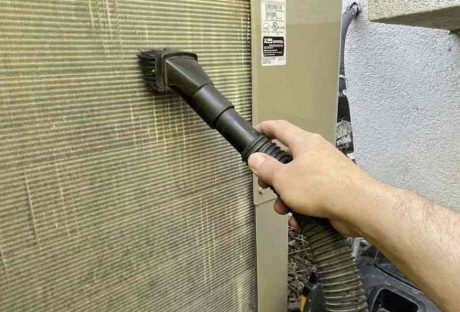Owning a home includes a good deal of responsibility.
Homeowners have dozens of minor tasks they need to keep up with if they want to avoid paying for costly repairs. With adequate preparation, though, the many maintenance tasks required of homeowners can be performed easily without taking up too much time.
Read on to find brief checklists for monthly and seasonal tasks that will make it easier to stay on top of everything.
Contents
Spring Maintenance Checklist

Winter can wreak havoc on a home, and everyone looks forward to using spring as a time to get outside and away from the house, but homeowners should take care of a few things first.
For example, spring is the best time to handle major projects like scheduling roofing services and repairs to address any damage done during the winter. Most homeowners also find that a small amount of work early in the season can help them prevent some extra hassles when summer approaches. Be sure to tackle the following.
Spring cleaning, both inside the home and in the yard.
Tree inspections to find signs of damage from winter storms.
Reseeding and fertilizing the lawn.
Properly servicing and storing seasonal equipment from winter, such as snow blowers.
Conducting a full inspection of the home’s exterior, including its roof, gutters, and paint.
Giving the house a quick scrub.
Cleaning the deck or patio.
Opening the pool for summer.
Summer Maintenance Checklist
Getting the bulk of the major landscaping and exterior maintenance or repairs done in the spring gives homeowners more time to enjoy the summer. That said, they’ll still need to take care of a few things regularly, including the following items.
Turning on the sprinklers for the season once the rain ends.
Mowing the lawn and weeding the garden every week.
Keeping the pool clean by scrubbing it twice a month and checking chemical levels weekly.
Completing weekend home improvement projects while the weather is nice.
Fall Maintenance Checklist
Just like spring brings a lot of work with it because it represents the changing of the seasons, fall home maintenance requires a lot of advanced planning for the winter months ahead. Important tasks to remember include the following.
Planting perennial flowers, trees, and shrubs.
Harvesting annual plants.
Raking leaves.
Cleaning gutters.
Turning off the sprinkler system.
Stacking firewood for winter.
Cleaning, closing, and covering the pool.
Winter Maintenance Checklist

Most modern families hunker down for the winter and don’t worry too much about home improvement projects. However, there are some maintenance issues that must be handled in the early winter. They include these items.
Preparing the snowblower for the season.
Stocking up on ice melt and other supplies.
Coming up with a plan for dealing with ice dams.
Checking the emergency generator to make sure it’s in good working order.
Monthly Maintenance Checklist
Not all home maintenance tasks are seasonal. Some must be performed every month of the year. They include the following elements.
Changing HVAC filters.
Inspecting major home systems.
Checking the plumbing system for damage.
Restocking cleaning supplies.
Checking and cleaning gutters.
Performing a full walk-through of the property.
Know When to Hire a Pro
Basic home maintenance tasks are easy enough to perform for someone with a DIY mindset. However, major repairs and renovations are best left to professionals. This is particularly true of projects like roof maintenance, plumbing repairs, and major landscape changes.
Read Also:




















